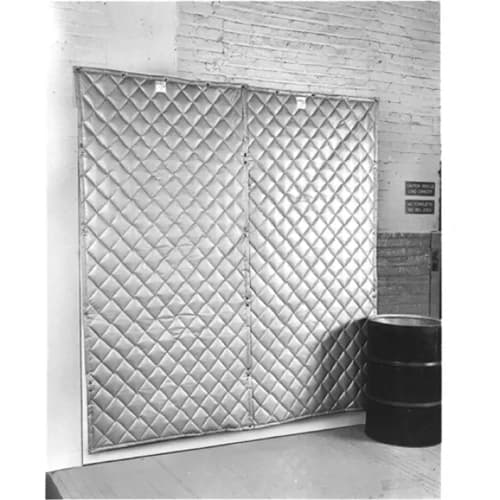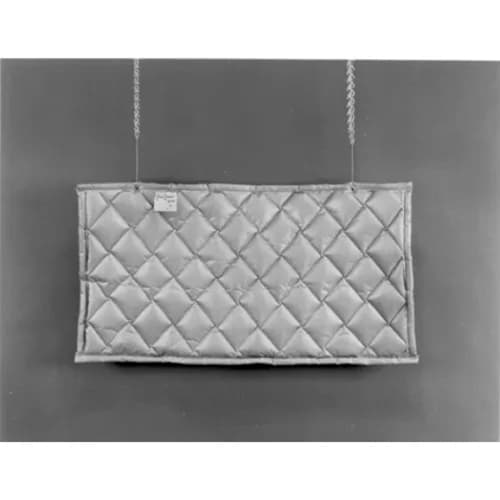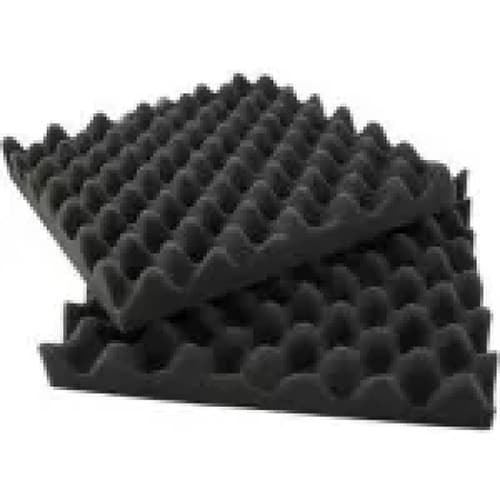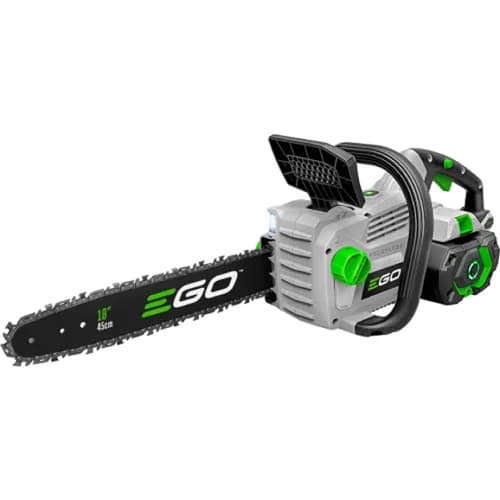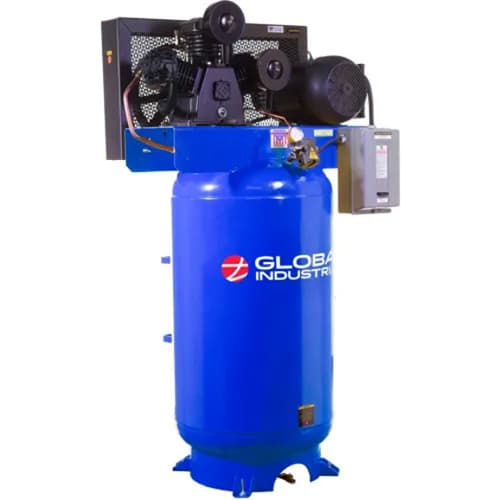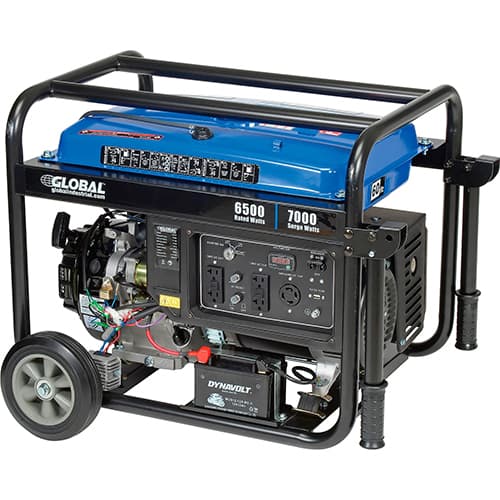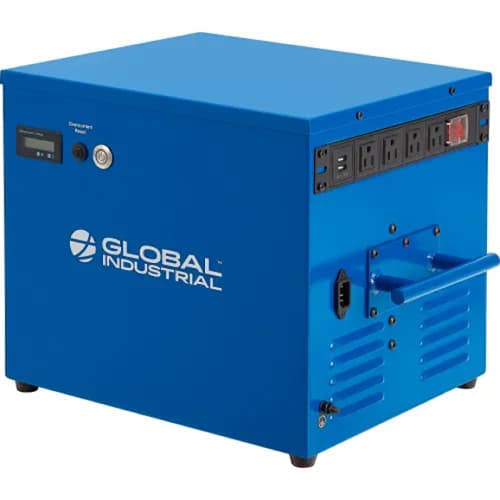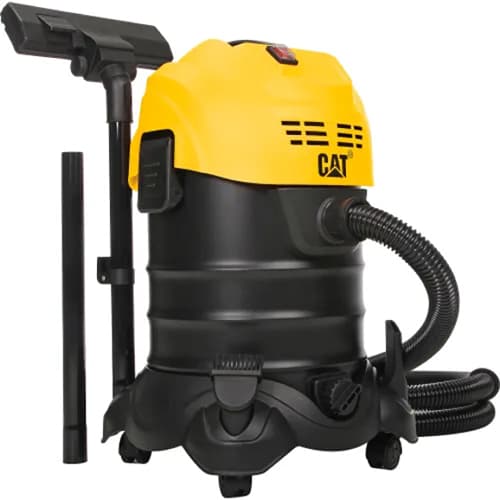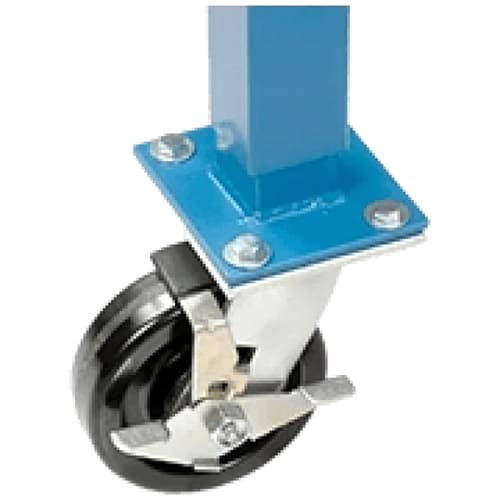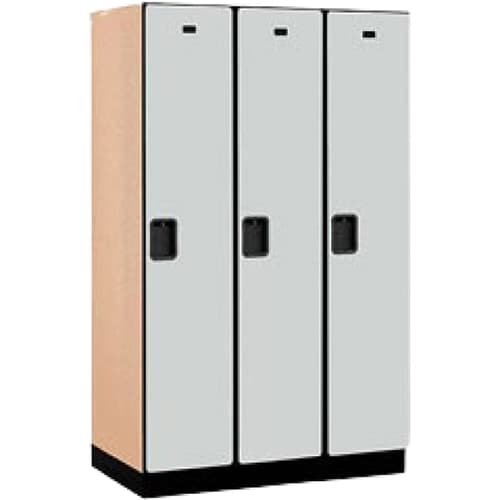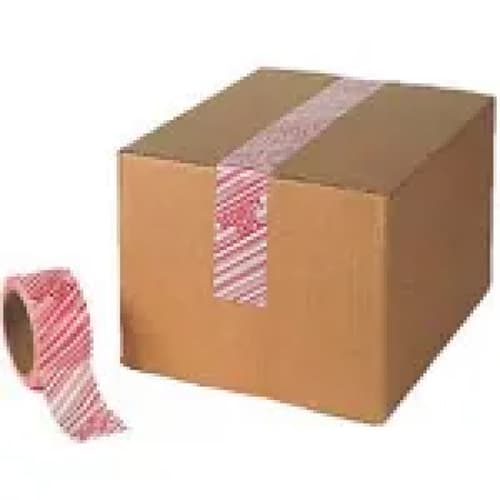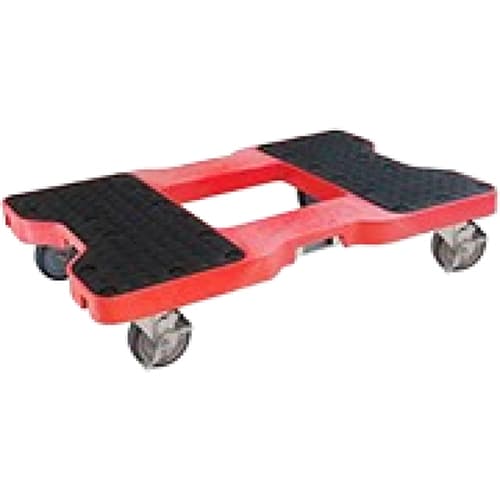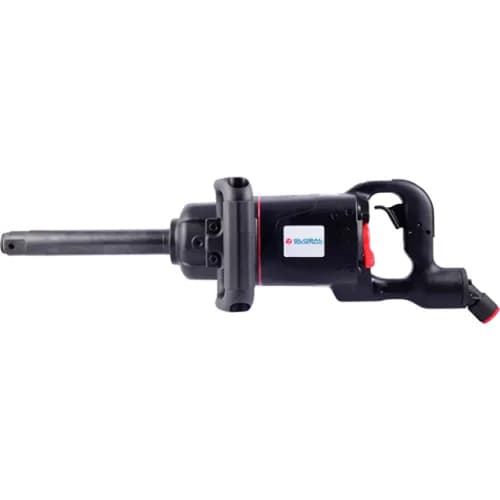Let’s make one thing crystal clear. If you’re here to get some advice on how to stop your crew from grumbling about work, well, good luck with that. This isn’t the article for you (and we dare say, such an article doesn’t exist). BUT, if you're here to tackle the deafening noise on your jobsite, congratulations, you’re definitely in the right place.
As you probably already know, reducing workplace noise goes beyond meeting OSHA regulations; it’s about improving the overall quality of work life. After all, we would all prefer to spend our days in a less tense work environment where focusing, team building and communicating are easier. It really is a no-brainer, right?
So, in this next installment of our “Keep Your Crew…” series, we’ll explore the latest commercial and industrial innovations designed to reduce noise in the workspace. From equipment and tools to accessories and supplies, these products and tips enhance productivity, protect your crew’s hearing, and make work environments more enjoyable, all without relying solely on OSHA ear protection and PPE.

Why is Noise Reduction So Important?
Excessive noise in the workplace isn't just a mild inconvenience; it’s a serious issue that affects safety, compliance, and morale. OSHA noise regulations currently set the Permissible Exposure Limit (PEL) at 90 dBA for an eight-hour workday. However, that doesn’t mean you should aim to hit that exactly, as it can still contribute to stress, distraction, and dissatisfaction. You need to be aiming for the lowest possible PEL by identifying and reducing excessive noise on the jobsite. Excess jobsite noise can lead to:
- Hearing Damage: Continuous exposure to high-decibel noise can cause permanent hearing loss.
- Lower Productivity: Loud environments make it harder to concentrate and communicate effectively.
- Accidents and Injuries: Too much noise can interfere with everything from safety alerts to audible warnings from crew members and alarms, leading to serious injuries.
- Decreased Job Satisfaction: Workers who endure constant noise often report decreased morale and increased stress levels. You may even lose valuable crew members because of the poor sound controls on the site.
However, there’s good news. By focusing on industrial noise control, your business will not only comply with these OSHA regulations but also create a more pleasant and productive workplace; one that’s also safer for your team, day in, day out.
Which Industries Benefit from Quieter Workspaces?
In a nutshell, all of them! By ensuring you outfit your crew with quieter tools and equipment, you can create healthier and more efficient environments that benefit your employees, customers, and of course, the bottom line. As we implied, every corporation can benefit from some form of industrial noise control, but here are some of the key industries we’ve identified:
- Construction
Construction sites are notoriously noisy environments, with heavy machinery, power tools, and constant activity contributing to high decibel levels. For workers exposed to these conditions daily, noise-induced hearing loss is a significant risk. However, implementing quieter alternatives can make a huge difference. Purchase battery-powered tools including: - Warehousing and Manufacturing
Warehouses and manufacturing facilities are often filled with machines that run continuously, generating significant noise pollution. This environment can lead to higher stress levels, decreased focus, and lower productivity among workers. Here’s a breakdown of commonly used battery-powered tools in these locations: - Road Work
Road work presents a unique challenge when it comes to noise. The crew is not only exposed to the loud sounds of their own machinery but also to the constant roar of nearby traffic. Quieter equipment helps reduce risks and improves work conditions in this high-stress environment. - Landscaping
Landscaping professionals often work in residential and commercial areas where maintaining a peaceful environment is critical. Noise reduction isn’t just a courtesy; it’s a competitive advantage. - Event Planning
Technicians and support staff working at public events face unique challenges when it comes to noise management. From setup to teardown, maintaining a quiet workspace ensures smoother operations and a better experience for attendees.
Beyond Ear Protection: Let’s Look at Engineering Controls.
While hearing protection devices (HPDs) are of vital importance, noise reduction efforts should always go further. Engineering controls tackle the source of the noise, offering long-term, cost-effective solutions that improve work environments across all industries. What do we mean by engineering controls? Well, here are some quick, but crucial, examples:
“Buy Quiet” Programs/Roadmaps
Developed by NASA, the Buy Quiet Roadmap is a strategy aimed at reducing noise exposure for workers by purchasing quieter tools and equipment. It helps organizations minimize Noise-Induced Hearing Loss (NIHL), improve workplace safety, and comply with occupational noise standards.
Key Elements of a Buy Quiet Roadmap:
- Procurement Guidance: Select equipment based on noise emission data, and make purchasing decisions based, in part, on industrial noise control.
- Noise Level Assessment: Measure and compare the sound levels of tools and machinery BEFORE purchase.
- Supplier Collaboration: Work alongside manufacturers to develop/provide quieter products.
- Cost-Benefit Analysis: Demonstrate how investing in quieter equipment reduces long-term costs associated with hearing conservation programs, healthcare, and productivity loss.
Equipment Maintenance
Lubricating moving parts, replacing worn components, and keeping machines in top condition can significantly reduce noise levels. What’s more, regular maintenance not only minimizes sound but also extends the life of your equipment. It’s a win-win situation for you, your team, and of course, the CFO.
Sound Barriers
Installing sound barriers, commonly acoustic panels or noise-dampening curtains, can create “quiet zones” within warehouses, manufacturing plants, and construction sites. These barriers absorb sound and prevent noise from spreading.
Noise-Reducing Tools and Equipment.
We live in an age of advanced engineering solutions, and the latest technological advancements have made it easier than ever to reduce workplace noise without sacrificing performance. Here are some easy-to-implement solutions to “keep your crew quiet.”
1. Battery-Powered Tools
Battery Powered Tools
Quieter, more efficient, and environmentally friendly, battery-powered tools are a much better alternative than their gas-powered counterparts when it comes to noise. They offer reliable performance with much lower decibel levels, making them an excellent choice for noise-sensitive work environments. Consider purchasing:
- Cordless Saws and Drills: Ideal for construction and warehouse settings, these tools operate with reduced vibration and noise.
- Landscaping Equipment: Battery-operated lawnmowers, trimmers, and leaf blowers are game-changers for landscaping professionals, offering quiet operation and zero emissions.
2. ‘Silent’ Pneumatics
Air compressors
- Air compressors are essential in many industries, but unfortunately, they’re often among the loudest pieces of equipment on site. By making the switch to low-noise alternatives (silent pneumatics), you can significantly improve workplace comfort. Typically achieved through specialized components (silencers, noise-dampening tech, optimized air-flow systems), ‘silent’ pneumatics are very useful in environments where noise reduction is critical. Industries include manufacturing, medical, and laboratory settings.
3. Low-Noise Generators and Power Stations
Portable power is a necessity on many job sites. Whether gas powered or the new generation of battery powered power stations, you have new quieter options to consider:
- Inverter Generators: Lightweight and compact, inverter generators not only offer quieter operation but also provide cleaner, more stable energy output. This makes them suitable for worksites, outdoor events, and sensitive electronics.
- Enclosed or Insulated Generators: These units are housed in insulated casings designed to suppress sound without sacrificing power or performance.
As industries and businesses increasingly prioritize workplace comfort and environmental harmony, quiet power stations have emerged as an essential solution. Traditional power stations, while effective, often generate disruptive noise, which can interfere with productivity, strain community relationships, and even pose health risks. Quiet portable power stations offer a versatile, noise-reducing alternative, providing reliable energy without compromising the comfort of workers or surrounding environments.
- Battery-Powered Power Stations: These stations rely on advanced lithium-ion or LiFePO4 batteries to deliver silent energy. They are ideal for indoor use, residential areas, and noise-sensitive applications, such as hospitals or events. Battery power eliminates engine noise, making these stations some of the quietest options available.
- Hybrid Solar Power Stations: Combining solar panels with battery storage, hybrid models operate silently while using stored or solar energy. They are particularly well-suited for off-grid worksites, outdoor installations, or operations prioritizing sustainability and noise reduction.
- Inverter Power Stations: Equipped with advanced inverter technology, these power stations optimize engine performance and reduce noise levels significantly compared to conventional generators. Their efficient operation and clean energy output make them an excellent choice for tools, electronics, and urban job sites.
4. Quiet Vacuums
Vacuums
For industries including warehousing, manufacturing, and industrial cleaning, quiet vacuums are a must-have. These machines are designed to handle heavy-duty cleaning tasks without the disruptive, and potentially ear-damaging noise. And if you’re working in office environments, the need for quiet vacuums will also keep your customers happy, too.
- Commercial-Grade Vacuums: Designed for continuous operation, these vacuums offer high performance with minimal noise, ensuring that cleanup doesn’t interfere with ongoing work or result in operator harm.
- Shop Vacs: Low-decibel shop vacs are perfect for garages, construction sites and warehouses, providing efficient debris removal without the ear-piercing sound of traditional models.
Additional Accessories
In addition to the tips and tools outlined above, many industrial and commercial supplies are now designed with noise reduction in mind. The following solutions further enhance workplace comfort and efficiency for you and your team:
Quiet Poly Casters:
Reduce the sound of carts and trolleys moving across floors, perfect for warehouses and hospitals.
Quiet Lockers:
Minimize clanging and banging in locker rooms with sound-dampening materials.
Quiet Carton Sealing Tape:
Silent yet effective, this tape is ideal for packaging and shipping operations.
Quiet Dolly:
Designed for heavy loads, these dollies operate smoothly and silently.
Quiet Impact Wrenches:
These tools combine power and precision with reduced noise, perfect for automotive and industrial applications.
Final Thoughts: Lower Decibels = Higher Productivity and Morale.
By investing in quieter tools, innovative equipment, and engineering controls, you’re not just protecting your team’s hearing; you’re also fostering satisfaction, focus, and long-term loyalty. Take the first step toward a quieter, more productive workplace by exploring our latest noise-reduction solutions. Your crew, and your bottom line, will thank you. And as always, if you need any help or guidance on industrial noise control, please contact our experts here at Global Industrial. We’ll be happy to help you create a “sound” environment for everyone.
The information contained in this article is for informational, educational, and promotional purposes only and is based on information available as of the initial date of publication. It is the reader’s responsibility to ensure compliance with all applicable laws, rules, codes and regulations. If there is any question or doubt in regard to any element contained in this article, please consult a licensed professional. Under no circumstances will Global Industrial® be liable for any loss or damage caused by your reliance on this article.
